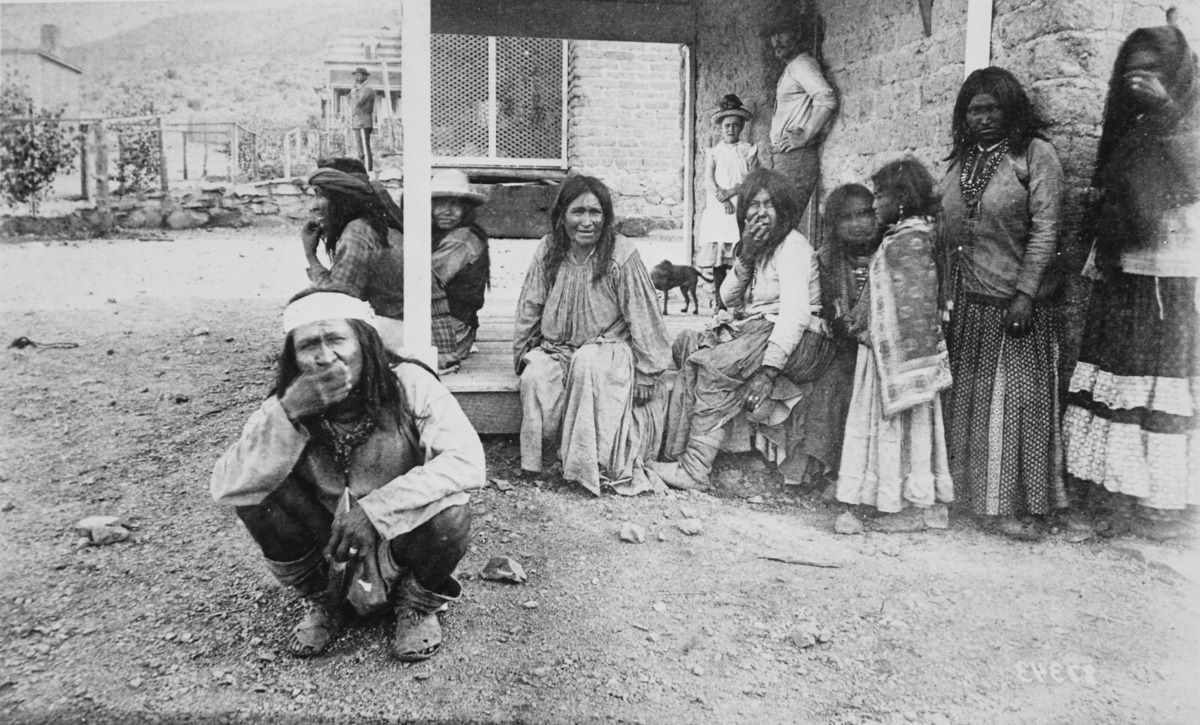Hidden Outposts Of The Apache Wars

Have you ever wondered about the hidden outposts of the Apache Wars? These remote locations hold stories of bravery, strategy, and survival. Nestled in the rugged landscapes of the American Southwest, these outposts served as crucial points during the conflicts between the Apache tribes and the U.S. military. Visiting these sites offers a glimpse into a turbulent period of history, where every canyon and mesa played a role in the struggle. Whether you're a history buff or an adventure seeker, exploring these hidden outposts provides a unique way to connect with the past. Ready to step back in time and uncover these hidden gems?
Hidden Outposts of the Apache Wars
The Apache Wars were a series of conflicts between the Apache tribes and the United States, spanning several decades in the 19th century. These battles took place across the rugged landscapes of the American Southwest. Many outposts played crucial roles in these conflicts, often hidden in remote areas. Here are some of the most significant hidden outposts of the Apache Wars.
Fort Bowie
Fort Bowie, located in southeastern Arizona, served as a key military outpost during the Apache Wars. It was established to protect the Butterfield Overland Mail route and later became a strategic base for operations against the Apache.
- Fort Bowie National Historic Site: This site preserves the remains of the fort and offers a glimpse into the life of soldiers and Apache warriors. Visitors can explore the ruins, hike the trails, and learn about the history through interpretive exhibits.
Chiricahua Mountains
The Chiricahua Mountains in southeastern Arizona were a stronghold for the Apache. These rugged mountains provided natural fortifications and hiding places for the Apache warriors.
Cochise Stronghold: Named after the famous Apache leader Cochise, this area served as a refuge for the Apache during the wars. Today, it offers hiking trails and camping spots, allowing visitors to experience the landscape that once sheltered the Apache.
Fort Rucker: Located in the Chiricahua Mountains, Fort Rucker was a military outpost used during the Apache Wars. Though now in ruins, it remains a significant historical site.
Dragoon Mountains
The Dragoon Mountains, also in southeastern Arizona, were another important location during the Apache Wars. The rugged terrain provided a natural defense for the Apache.
- Council Rocks: This site in the Dragoon Mountains was a meeting place for the Apache. It is believed that Cochise and his warriors held councils here. The area is now a popular hiking destination.
San Carlos Apache Indian Reservation
The San Carlos Apache Indian Reservation in eastern Arizona was established as a place to relocate the Apache tribes during the wars. It became a focal point of conflict and resistance.
- San Carlos Apache Cultural Center: This center offers insights into the history and culture of the Apache people. It provides a deeper understanding of the struggles and resilience of the Apache during the wars.
Gila Wilderness
The Gila Wilderness in southwestern New Mexico was another area where the Apache sought refuge. The dense forests and rugged terrain made it difficult for the U.S. military to pursue them.
- Gila Cliff Dwellings National Monument: While not directly related to the Apache Wars, these ancient cliff dwellings offer a glimpse into the region's history. The area was also used by the Apache as a hideout during the conflicts.
Santa Catalina Mountains
The Santa Catalina Mountains near Tucson, Arizona, were another strategic location during the Apache Wars. The mountains provided a natural barrier and hiding places for the Apache.
- Sabino Canyon: This area in the Santa Catalina Mountains was used by the Apache during the wars. Today, it is a popular recreation area with hiking trails and scenic views.
Conclusion
These hidden outposts of the Apache Wars offer a fascinating glimpse into a tumultuous period in American history. Exploring these sites provides a deeper understanding of the challenges faced by both the Apache and the U.S. military during this time.
Discovering the Legacy of the Apache Wars
Exploring the hidden outposts of the Apache Wars offers a unique glimpse into a turbulent period in American history. These sites, often overlooked, hold stories of bravery, resilience, and conflict. Visiting places like Fort Bowie, Cochise Stronghold, and Skeleton Canyon brings history to life, allowing you to walk in the footsteps of those who shaped the American Southwest. Each location provides a deeper understanding of the struggles and strategies that defined the era. Whether you're a history buff or just curious, these outposts offer a rich, immersive experience. They remind us of the complexities of the past and the enduring spirit of the Apache people. So, pack your bags, lace up your hiking boots, and set out to uncover the hidden gems of the Apache Wars. The adventure awaits.

